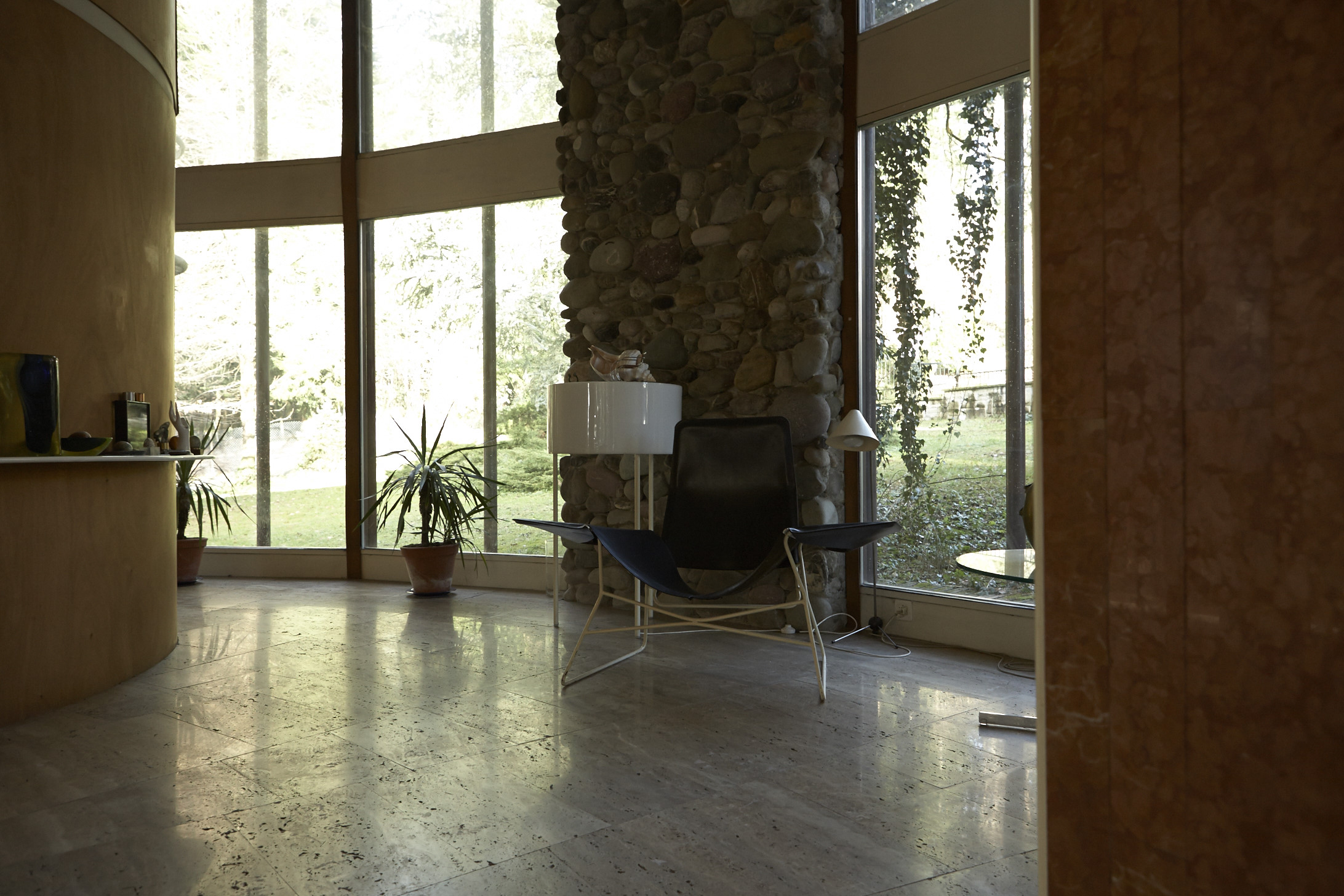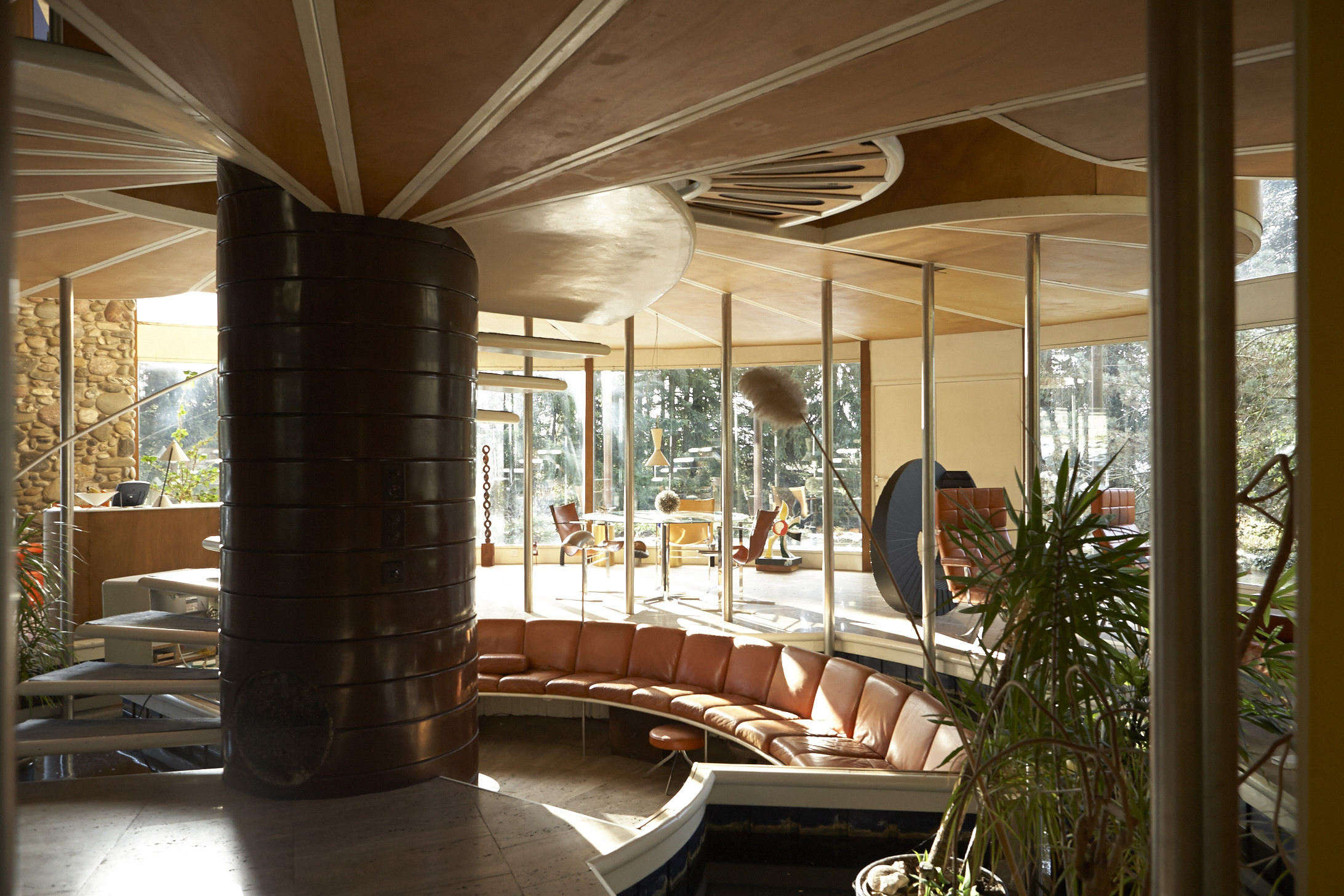The Kolb House in Switzerland by Otto Kolb was an important source of inspiration and reference for this integral understanding of architecture. Sustainability didn’t really exist yet as an issue at the ETH Zurich, and we found the first ecological houses in Germany really terrible.
But Otto Kolb linked this theme with a lifestyle. Kolb drove his Maserati to the ecological house and the house was designed accordingly. Suddenly, ecology was no longer equated with a rejection of delight. In the way it links all these themes, the Kolb House has remained highly contemporary to the present day.
Kolb had taught design in Chicago and built a few very beautiful houses influenced by Mies van der Rohe. After returning to Switzerland he found it difficult to establish himself as an architect. Rescue came in the form of a staircase system that he invented, patented and produced himself.
He built his own dream house with his workers during quiet phases in the production, using elements left-over from producing staircases. The house is a complete recycling product. The stones are from the site excavation work, the metal is waste from his factory. The building services concept integrates all the parts. At the centre of the house, there is a large water Otto Kolb cistern that is filled from roof water collectors. The wall panels function as wall heating. Lifestyle elements such as the open fireplace are integrated in the energy concept; water is led through the fire grate to back-up the heating system. After the sauna you can bathe in a semi-circular outdoor pool that also makes sense in energy terms, as it reflects the sun into the house. And ultimately, the house is also very formal. It developed very clearly out of the idea of the round house. And it is a social vision, a house without walls, liberated open living (which naturally provokes a family row or two). All in all, a totally connected statement.
Zit. by: http://www.em2n.ch/_data/documents/120109_How_We_Became_Part_I.pdf


